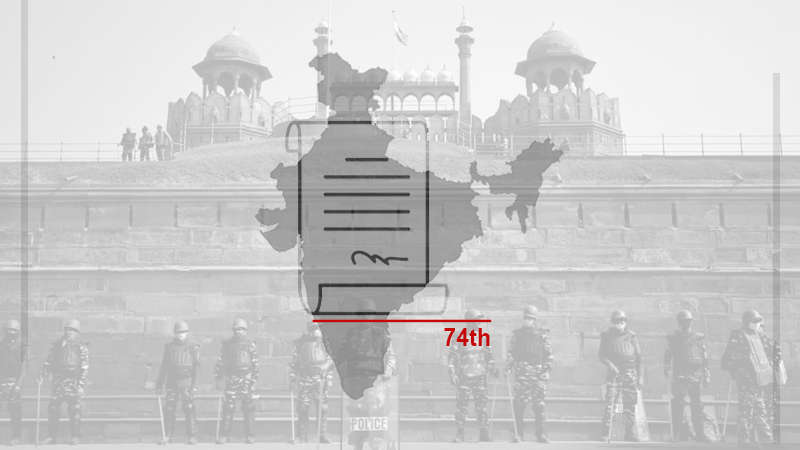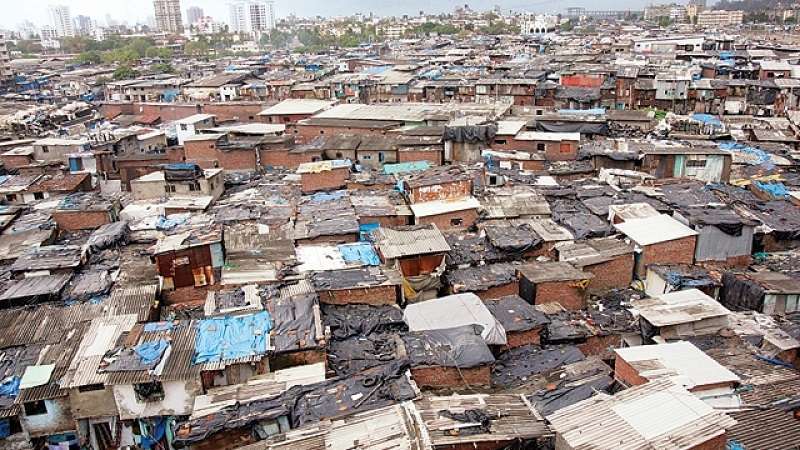When it Comes to Urban Planning, India Suffers From a Poverty of Imagination
While there is indeed much to celebrate about contemporary architecture and urban planning in India, it however overlooks the significance of its failures, such as the stubborn persistence of the degraded quality of the contemporary built environment. These failures are the legacy of the colonial origins of the professions, which has created conundrums, or conceptual dilemmas, that its legatees have not resolved. Taking a cue from the works of the celebrated designer, Dashrath Patel, I argue that the key to resolving these conundrums lies in seeking the objectives of pragmatic indigeneity – focus on the local context – in strategies to engage with local habitats.
Patel was a polymath in the design disciplines, an exemplar of the proverbial native genius, whose designs evolved from a rational understanding of the local context. As a consequence, his designs displayed an unselfconscious indigeneity in a field that was striving to emulate global trends. This approach marked him as a quintessential iconoclast that offers salutary lessons for contemporary architects and urban planners in India.
As an architect and urban planner, I worked with Dashrath Patel closely on several projects, which inflected my professional ideas. It motivated me to turn the spotlight on my own profession and undertake a critical examination of the ideologies and strategies that governed its practice. I realised that architects and urban planners in postcolonial India have continued to follow prescriptions specified by the colonial government to resolve contemporary habitat problems.
Of course, diagnostic tools and technologies had changed, but the underpinning ideologies had not. Consequently, the degraded quality of contemporary architecture and urbanism, I realised, was created as much due to the failure of professionals as the other agents – politicians, administrators and even, citizens – who are routinely blamed for its degeneracy.

In a landscape marked by a degraded quality of contemporary architecture, Charles Correa’s design for the Gandhi Smarak Sangrahalaya (Gandhi Memorial Museum), located in the Sabarmati Ashram in Ahmedabad, is an iconic example of modern Indian architecture. It demonstrates that it is possible to follow the universal tenets of architectural modernism while simultaneously responding to the local context – in this case, the philosophy of Mahatma Gandhi’s advocacy of the rural culture of India. Credit: Sabarmati Ashram Preservation and Memorial Trust, Ahmedabad

The ubiquitous village courtyard modulates the experience of internal spaces at the Gandhi
Smarak Sangrahalaya, inaugurated in 1963 by the then Prime Minister Jawaharlal Nehru. Credit: Sabarmati Ashram Preservation and Memorial Trust, Ahmedabad
The modernising ideals of professionals have invariably been to “catch-up” with the practices in the developed economies. They are unable to take into account the complexity of the local context that defines the problems of the habitats they deal with. This is because of the education system that was put in place after Independence. Mahmood Mamdani, a Ugandan academic and political commentator, has insightfully pointed out that the education pedagogy in postcolonial universities in Africa “draws its inspiration from the colonial period and takes as its model the discipline-based, gated community that maintained a distinction between clearly defined groups: administrators, academics and … students … who could serve as a native vanguard of ‘civilisation’ without reservation or remorse.”
In India, too, its objective has been to ‘civilise’ the local society. As Mamdani further explains, “In exporting theory from the Western academy, colonialism brought with it the assumption that theory is the product of Western tradition and that the aim of academies (and professionals) outside the West is to apply it.”
Such an education system produces technicians – who later become architects, urban planners and decision makers in the government – whose learning begins and ends with the application of a theory produced elsewhere. This explains why strategies to produce contemporary architecture and urban development in India are based – “without reservation or remorse” – on the need to “catch-up” with the western precedents and not to deal with the local economic, social and cultural realities.
One of the tragic consequences of following western precedents in architecture and urban development has been the adoption in recent times of the architectural and spatial imagery that Rem Koolhaas, an influential Dutch architectural theorist, calls the “generic city”. The generic city, such as the Pudong area of Shanghai or the new real estate developments of Singapore, is conceived as tabula rasa city, one that can reinvent itself, from top to bottom, without any concern for its own earlier identity.
The objective of reinvention, Koolhaas explains, is that, “Eden does not precede development. It follows it.” The influence of the “generic city” can be seen in the recent push to implement the objectives of the SMART City Mission. In Delhi it manifests itself in the redevelopment of East Kidwai Nagar and Naoroji Nagar precincts of New Delhi, where historic neighbourhoods built during the post-Independence period are being completely razed, along with thousands of mature trees, to modernise the city.

Plan for the World Trade Centre. Credit: Youtube/NBCC
The ideals of modernisation represented by the “generic city” subvert attempts to root development in existing ground realities, including the benefits that could accrue by conserving historic cities. For example, it underpinned the withdrawal of the nomination of Delhi to the list of UNESCO World Heritage Cities in May 2015. Just before its approval was to be considered, the government panicked, because it thought that the heritage tag would restrict their political agenda to “modernise” the city. For similar reasons the iconic Hall of Nations at Pragati Maidan, New Delhi, was demolished to construct a “world class” convention-cum-exhibition centre. Such modernising ideals eliminate the possibility of creating spatially and temporally multivalent cities, habitats that are an organic accretion of a variety of urban precincts built over time, which creates a palimpsest that enriches urban experience.

The Hall of Nations. Credit: The Wire
It also highlights the absence of self-reflexivity in the profession. Professionals have found it sufficient to merely ‘get things done’ based on what they were taught in the class room. They have remained wary of contentious theoretical debates that explore the subtexts of how things got done. Perhaps one can infer from this that in a country like India, desperate to develop, the imperatives of ‘doing’ frequently trump the importance of ‘thinking’ which is disdained as a luxury the profession cannot afford. That the two acts are far from antithetical to one another – indeed, the only way to make the colonially rooted professions responsive to contemporary economics, culture and politics, is to intellectually reinvigorate it by linking the acts of ‘doing’ and ‘thinking’ – has yet to be internalised by professionals.
The conventional education of architects and urban planners in India alienates them from the society in which they live and work in at least two profound ways. First, they are taught the subject as one that is expected to service the needs of a new kind of society – a modern society-in-the-making, but in another way, they are required to simultaneously reject the characteristics of the existing society in order to validate the relevance of what they are taught. In this manner, the pedagogy assumes that all problems are generically universal and so too all solutions. It replicates the content developed in advanced societies, celebrates their heroes, and cites their models as examples to emulate, in the expectation of achieving similar benchmarks of economic and social development. Of course, there have been honourable exceptions to this model, but the works of sensitive practitioners, like Balkrishna Doshi, for example, only prove the rule.

Raj Rewal’s design for the Asiad Games Village (1982) was that of a contemporary housing complex based on modern building bye-laws, but it took its cue from the spatial structure of the historic town of Jaisalmer. Credit: Madan Mahatta

Raj Rewal’s design for the Asiad Games Village (1982). Credit: Madan Mahatta
Not surprisingly, formally trained, mainstream architects in India deal with only a very small segment of the habitat – it is said, less that 10 %. This is a colonial legacy. That the colonial government ignored the habitat needs of the vast majority of Indians, especially the poor, was in consonance with the paradigm of colonialism; in fact, to change that paradigm was one of the motives to seek political freedom.
But the conundrum in the postcolonial architectural profession is that it continues to uphold a similar blinkered vision in dealing with the contemporary habitat. For example, it is rationally inexplicable why even the sub-human conditions of slums and the poor quality of housing infrastructure, fail to trigger a self-reflexive re-evaluation of professional priorities and objectives. After all, it was similar circumstances in Europe that gave birth to the immensely influential Modern Movement in architecture at the turn of the last century. Instead, professional practice in India continues to focus on and celebrate the design needs of the high end of society, just as it did during colonial times.
A similar blindness prevails in the manner urban planners deal with the problems of urbanisation. The colonial origins of the discipline firmly turned its gaze towards the West. It continues to disregard what scholars in the social sciences have begun to identify as “indigenous modernity”. While quotidian urban development continues to creatively fulfill the contingent needs of society, trained urban planners are not involved in mediating its outcome. In fact, their objectives have generally been to use the police powers of the state to suppress the process. By exclusively focusing on new developments based on ‘universal’ urban models, professionals ignore the potential of leveraging the transforming social and economic characteristics of society-at-large, particularly the aspirations of the rural migrants to the city, to build more satisfying cities. This is the cause of the degraded conditions of existing habitats and the proliferation of slums and other illegal settlements of the poor and rich.
The focus on new development has meant that the lessons of Patrick Geddes, who proposed culturally sensitive and humane urban renewal schemes for Indian cities, are treated as footnotes in the history of modern Indian urban planning, and duly forgotten while dealing with contemporary habitats. Instead, the lessons of Le Corbusier, the towering genius of Western Modernism, are valorized. Le Corbusier once said, modernity begins where history ends, and by following his dictates architects and urban planners in India have paid a heavy price to achieve modernity because it has contributed to the denigration of the rich legacy of historic cities and architectural traditions of the country.
It is in this context that I refer to Dashrath Patel’s approach to design. He advocated pragmatic indigeneity in design that was rooted in a deep understanding of ground realities. His approach aimed at neither stylistic expressions in design nor its rejection. It did not pursue indigeneity as a nationalistic or cultural symbol and it also did not reject it in favour of universal design principles.
Dashrath’s approach recalls the distinction Robert Venturi made in his provocative book, Complexity and Contradiction in Architecture, between an “either/or” and a “both/and” approach to problem solving. His was a “both/and” approach, whose logic evolved out of a deep understanding of the local context. It enabled him to posit the integrated survival of community needs, livelihoods of craftspeople and the environment through his design interventions. In the process, he compellingly bridged many disciplinary boundaries that separate experts working independently on the ground, thus overcoming the limitations of postcolonial educational pedagogy.

Vegetable dyes workshop, Rural Design School, Sewapuri, 1986. Credit: Dashrath Patel Archive, Ahmedabad

New range of leather products, Rural Design School, Sewapuri, 1985. Credit: Dashrath Patel Archive, Ahmedabad
The best example of his vision was perhaps the design school he set up at the Gandhian Saghan Khshetra Vikas Samiti at Sewapuri, Varanasi, in the 1980s, after he left the National Institute of Design. This was the period when India was opening up to the outside world and many institutions and individuals were promoting the integration of Indian crafts into the global market as the most effective strategy to sustain the craft traditions and the livelihoods of the crafts communities. Dashrath, ever the iconoclast, pointed out that this would make the craft producer dependent on a fickle foreign market and would not meet the desired objectives of holistic sustainable development. It would replicate the colonial strategy to exploit local resources by integrating local craft production to global markets. At Sewapuri he suggested, instead, that it was the local markets that needed to be strengthened through new design inputs in order to sustain both the crafts and the communities that were dependent on it. Arguably, a similar strategic vision can upgrade our built environments and reform contemporary architecture and urban planning.
The focus on indigeneity in design is difficult to appreciate today, particularly because India is far more integrated with the international economic and cultural systems. The global market is now, more strongly than ever, the arbiter of decisions to be taken for the welfare of local society – including, regretfully, in the field of education. So the questions that confront architecture and urban planning professionals in India today are whether they should be looking outwards for inspiration and solutions to local problems or inwards, whether to embrace the dictates of global models of architecture and urban planning, or pursue the principles of indigeneity, such as Dashrath Patel advocated, and thereby overcome the conundrums that persist in the postcolonial professional practice.
Related Articles

Implementation of 74th Constitutional Amendment

A NEED TO UPGRADE THE SLUMS

Introduction of Transit Oriented Development in metro cities: A case study of Kochi

Efficient water pricing is necessary to prevent a tragedy of commons: A case for efficient water pricing in water supply in Indian cities




